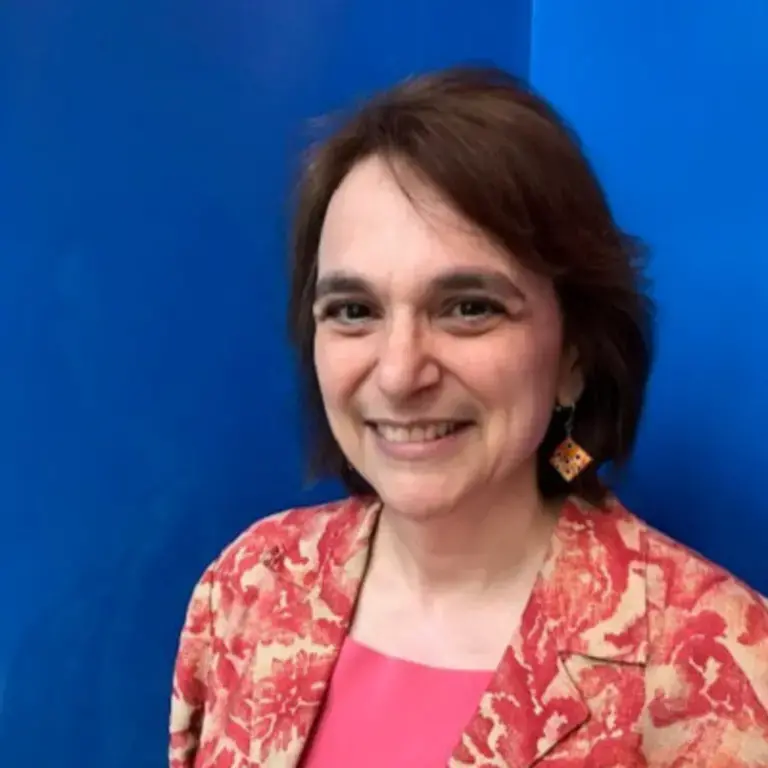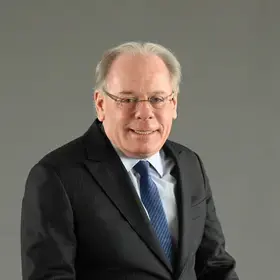Sustainability Management Lecturer Dr. Julie Reiss brings a wealth of interests and expertise to the program. She is an art historian with experience ranging from teaching and designing academic programs to museum education, writing, and curating. Dr. Reiss also directed a master's program in modern and contemporary art at Christie’s Education New York. A pioneering scholar in installation art, she is the author of From Margin to Center: The Spaces of Installation Art (MIT Press, 1999) and editor of Art, Theory and Practice in the Anthropocene (Vernon Press, 2019). For the past decade, the focus of her teaching and writing has been on the role art can play in shifting paradigms and raising awareness of the climate crisis. Here, Dr. Reiss reflects on her experience turning the lessons of her Art and Sustainability course into a master class at MUSE (Museo delle Scienze) in Trento, Italy.
Last fall I had the pleasure of teaching a course, Art and Sustainability, in the Sustainability Management program. The course explores how art can contribute to a sustainable and equitable future by raising awareness of the causes and repercussions of climate change—and opening up a space for imagining alternative futures that move away from consumerism, anthropocentrism, and colonialism.
Teaching this class within the context of a sustainability management program provided an opportunity to consider art outside of the art world, and explore its broader efficacy in contributing to sustainable futures.
The range of professional and academic backgrounds that the students brought to the class ensured a variety of perspectives, expanding the points of intersection between art and different disciplinary lenses. We explored ecological art that had been created in collaboration with scientists and argued the limits of people’s tolerance for art perceived as didactic. Alternatively, we considered the pitfalls of aestheticizing environmental disaster and wondered how much scientific information should be included alongside artwork.
In November I had the opportunity to present some of this same artwork to members of the scientific community and to see it from yet another point of view. I was invited to teach a master class on art and sustainability at MUSE as part of We Are the Flood, a program co-curated by artist Stefano Cagol and biologist Carlo Maiolini. I taught the class in a lecture room full of rock samples and skeletons, and this unique context reframed the art yet again.
My students were primarily engaged professionally or academically in the arts, but some of the museum’s staff scientists sat in and raised questions I hadn’t considered.
One question was about American Earth Landscape by the artist Alan Sonfist, who redrew the conventional map of the United States using the distribution of different soils as the boundaries rather than state lines. Upon seeing this artwork, Carlo Maiolini expressed frustration that scientists had long produced similar maps, but few people outside their field had paid attention. But Sonfist’s artwork, with crowdsourced soil samples and a strong internet presence, had reached a fairly large audience despite being less precise.
Maiolini also questioned artist Amy Balkin’s Public Smog project and the proposal to submit Earth’s atmosphere for the UNESCO World Heritage List, Balkin’s playful attempt to secure the protection of the world’s atmosphere. He saw Balkin’s gesture as a dangerously anthropocentric line of thinking—treating the atmosphere as we would a human monument in order to argue its value. These discussions and dialogues enriched my time there.
I taught the class at MUSE during the last days of the 2022 United Nations Climate Change Conference [COP27], and it was never far from my mind. Earlier in the year Abdulla Shahid, president of the 76th UN General Assembly, had publicly stated, “The art world can and should play a pivotal part in restoring the balance of our relationship with nature. Art possesses a transformational power; it can communicate global issues to the general public in a manner that is culturally rooted. It elicits change that is unique but potent at the same time.”
This commitment to art was borne out in Sharm El-Sheikh, where a variety of high-profile art exhibits incorporated knowledge from different disciplines. Bahia Shehab’s installation, Heaven and Hell in the Anthropocene: Two Scenarios of Eternity, drew on psychological studies that showed that being in a hot room makes people more concerned about climate change. Her installation consisted of two rooms, one overheated and smelly and the other cool, pleasantly scented, and comfortable. At the entrance, visitors were required to fill out a questionnaire about their sustainability habits and openness to changing behavior. Their answers determined which room they were directed to. Of the 3,100 delegates who visited the artwork, more than 1,000 of them were directed to “hell” based on their answers. Those directed to “hell” were invited afterward to experience the cooler room. The artist hoped that the visceral experience of being in an overheated room would influence visitors toward more climate-friendly behavior.
There is clearly much work to be done across disciplines, and art is a conduit for those intersections. Context partially determines how information is interpreted and which questions are raised. Bringing art together with different disciplines can push all involved to new heights.
About the Program
The Columbia University M.S. in Sustainability Management provides students cutting-edge policy and management tools they can use to help public and private organizations and governments address environmental impacts and risks, pollution control, and remediation to achieve sustainability. The program is customized for working professionals and is offered as both a full- and part-time course of study.
The Sustainability Management application deadline for fall 2023 is May 15, 2023. Learn more here.



